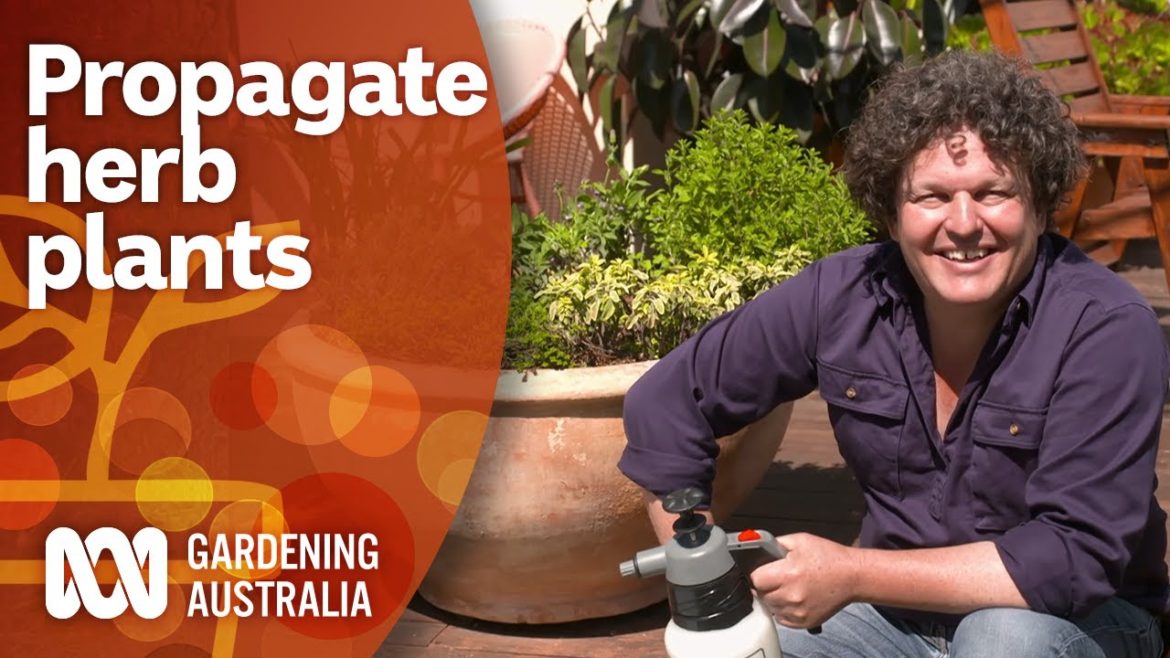Josh demonstrates an easy way to propagate your woody herb plants, to keep them fresh so you can enjoy them in your garden as well as your kitchen. Subscribe 🔔 http://ab.co/GA-subscribe
Woody herbs are staples in most productive gardens. Being woody herbs, it’s not much of a surprise that they can grow woody as the supple young plants you put into the ground become tough and mature. They also can lose their vigour as they become woody, after a few years not bouncing back quite as well as they once did after a hard prune.
Cuttings are the most common way to propagate plants for home gardeners as well as large-scale propagation nursery. Get this technique down, and you can apply it to almost all plants in your garden!
This can be done any time of year, except for the dead of winter. Undertaking it in spring will yield the fastest results.
Step 1: Taking the cutting
– Use sharp, fine-tipped snips to take cuttings. This prevents damage to the plant using blunt force or ripping the stem.
– Look for nice healthy tips to harvest from. You don’t want to take any stems or leaves that are sad or diseased. If your plant is diseased or struggling, taking healthy cuttings can be a good way to give it a fresh lease on life.
– If it is a hot day or you are taking lots of cuttings, it is a good idea to keep them fresh by storing the cuttings in a container with a wet towel to keep them hydrated while you work. If the stems dry out, they won’t strike.
– An ideal length for cuttings is about 10-15 cm long, or with around four nodes. Don’t worry about the length too much as you can always trim it back when you get to the planting phase if they are too long.
Step 2: Trim stems & excess foliage
– Bring your cuttings into your workstation or greenhouse. Now you can clean up the foliage and trim back the length.
– A minimum of four nodes is ideal for sage cuttings. The node is the area where leaves and stem meet. Josh can demonstrate how to find and count the nodes. Ensure the base of your cutting is cut underneath the node. This area has a higher concentration of the plant hormone, auxin, which encourages rooting.
– Trim or gently pull off the leaves from the bottom three nodes, leaving just the foliage at the top growing tip. Any extra foliage will speed up drying of cutting which is not ideal. If the leaves left are quite large, you can cut them in half to reduce the surface area. This will not harm the plant but will reduce water loss.
Step 3: Place in growing medium
– Fill pots with propagation mixture and wet well beforehand. This mix is a bit finer than conventional potting mix, it should be nice and fluffy and hold onto moisture well. Extra perlite mixed in is also a good idea as it allows the developing roots to push through and access air.
– Dip ends of stem in rooting hormone if you have it or would like to, but it is not required. If you do use it, remember that a little goes a long way.
– Stick the stems directly into the pre-prepared pots, up to the bottom of the remaining leaves. You may put several cuttings in the same pot at this early stage.
Step 4: Managing moisture
– Water in well and place the pots in your greenhouse, propagation station, or under a DIY humidity dome such as a plastic container to keep the soil moist. You can take the lid off of the humidity dome every few days to allow fresh air in and prevent root rot, but keeping the soil moist during the initial growth phase is crucial. If the cuttings dry out, the rooting with cease and the cuttings will die.
Step 5: Separate your plants!
– Rooting time required can take a couple of weeks or up to 2 months, depending on the season. How do you know if you have been successful, and the cuttings have set root? If you see new growth of leaves from the top of the plant. Also, you can give them a tug and they should hold nice and firm in the soil.
– Once your baby plants have grown a bit and developed a good root mass in their pots, you can separate them out from each other and pot up individually. After they have grown healthy roots in their individual pots, plant them out in the garden.
___________________________________________
Gardening Australia is an ABC TV program providing gardening know-how and inspiration. Presented by Australia’s leading horticultural experts, Gardening Australia is a valuable resource to all gardeners through the television program, the magazine, books, DVDs and extensive online content.
Watch more: http://iview.abc.net.au/programs/gardening-australia
Facebook: http://www.facebook.com/gardeningaustralia
Instagram: http://www.instagram.com/gardeningaustralia
Web: http://www.abc.net.au/gardening
___________________________________________
This is an official Australian Broadcasting Corporation YouTube channel. Contributions may be removed if they violate ABC’s Online Conditions of Use http://www.abc.net.au/conditions.htm (Section 3).


5 Comments
Every Aussie should be growing at least 1 food item on their property.
Thanks Josh! I'm in Queensland and I always wondered whether it was worth it to put in a green house. I purchased one but haven't put it together. You may have convinced me otherwise. Cheers!
Well here I am again. I said I would give you my full supoort. Your channel is very awesome.
Great idea!
Nice information